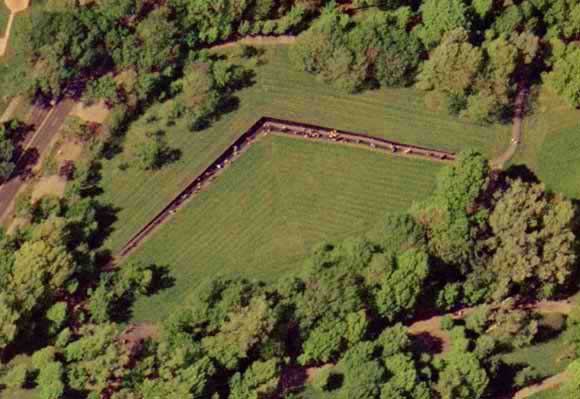Normally the Vietnam Veterans Memorial, which is the proper name, looks like this, but if you are eagle-eyed you will have noticed the reflections of lots of people in the wall (live people, unlike the odd photographs etched in stone over at Korea). Remember, this is Veterans Day, and many of the veterans of Vietnam are still alive. A subset of the survivors of our longest foreign engagement came to pay their respects and remember their compatriots who didn't make it out of Indochina alive. You can see some of them below, on the right in the black leathers jackets.
This is our Wall. In Berlin they have fragments of the Berlin Wall, which was their Wall, dividing one country in two. In Israel/Palestine there is a Wall which is a political division made manifest in concrete and barbed wire. Here we have our own Wall, memorializing a conflict which divided the United States public just a bitterly as the two halves of Cold War Berlin; even if there was no real geographic division, it was perfectly possible to be firmly on one side or the other of our Wall. Perhaps that made it even more bitter - your adversaries were not safely locked away on the other side of a wall. You might work with them, or go to church with them, or live across the street from them. There was no physical wall, but there was a Wall.
The Vietnam Veterans Memorial from above. Not my photo (duh).
Perhaps it is appropriate, then, that the memorial - wall though it is - has only one side. It's not really visible in any of my photos, but at either end of the path that runs the length of the memorial the wall is only a few inches high. As you follow the path towards the center, however, you walk downhill, and more of the wall emerges from the earth, etched with the names of the dead. At the nadir, where the two downward-sloping paths meet, is this:
(At the bottom of that seam, on the left side, is 1975, the year the last American troops withdrew and Saigon fell, signaling the war's end. You can see it - the date, not the fall of Saigon - here.)
This is the deepest point of the wall, which feels like a pit, sunlit though it may be, with the wall rising a several feet above your head. Behind the wall, here and all along it, is earth - the earth from which the memorial rises, cousin to the earth which holds the bodies of the men whose names are carved into the rock (it's gabbro). But unlike the walls in Berlin and Israel/Palestine, there is no "other side" of this wall. When you come to see the memorial, you stand on the side with the names. Everyone stands on the side with the names, and you read them, even if/though you don't know who they are. We're all on the same side of the wall, united at the memorial to the war which divided us. We're looking at the names of the men who died in the jungles of Vietnam, and behind them is the earth, from whence we came and where we will return. Our soldiers have merely preceded us.
Blow up this picture and look at just a tiny fraction of the names carved there. They sound like ordinary men.
Wilbert R. Butler, Lester L. Crooks, Ralph Byrd, Bobby Lee Favors, Guy F. Snyder, Helder A. Correia da Silva, Carl S. Mays, John B. Mecker...
Who were they all? Each one of those names is more than just a collection of characters etched into a rock. They were all someone, all people, with families and pasts and aspirations for the future. They were also all casualties of a war that, when it was over, was hard to clearly define. What did we get out of it? Why were we there? And why did it take so long to leave?
Ring a bell?





No comments:
Post a Comment